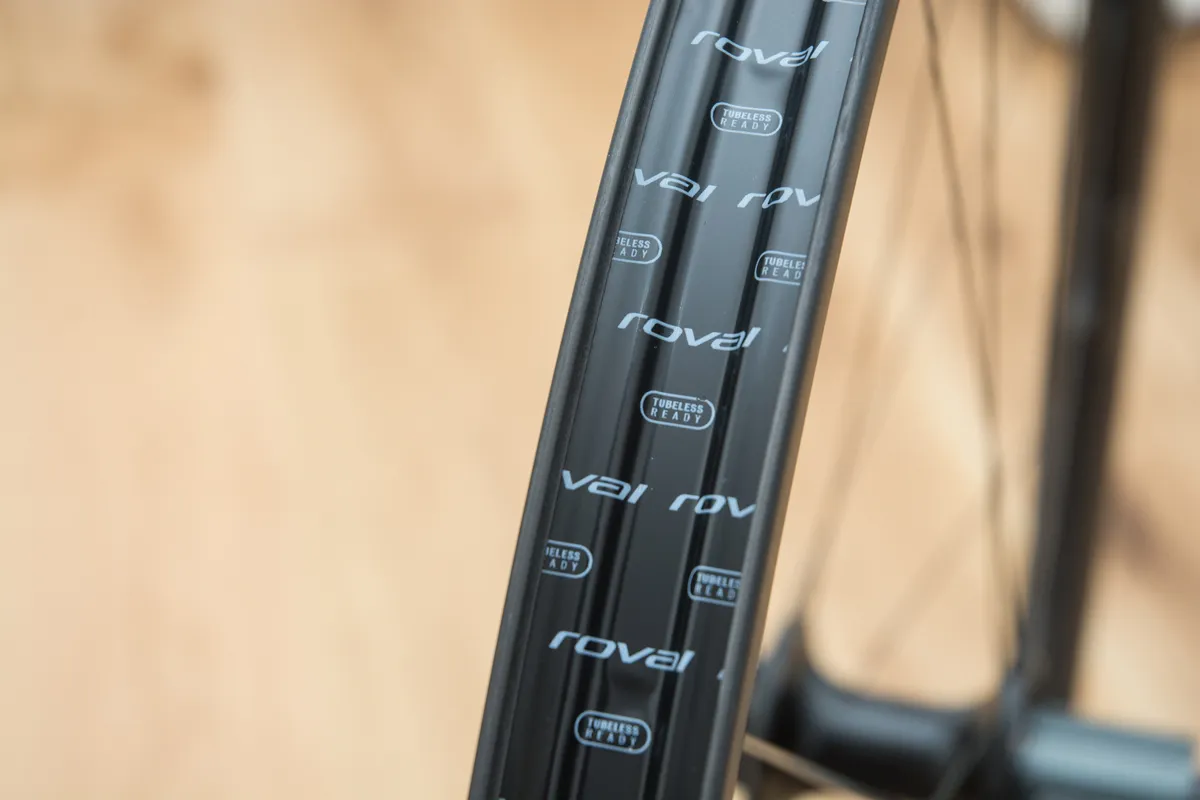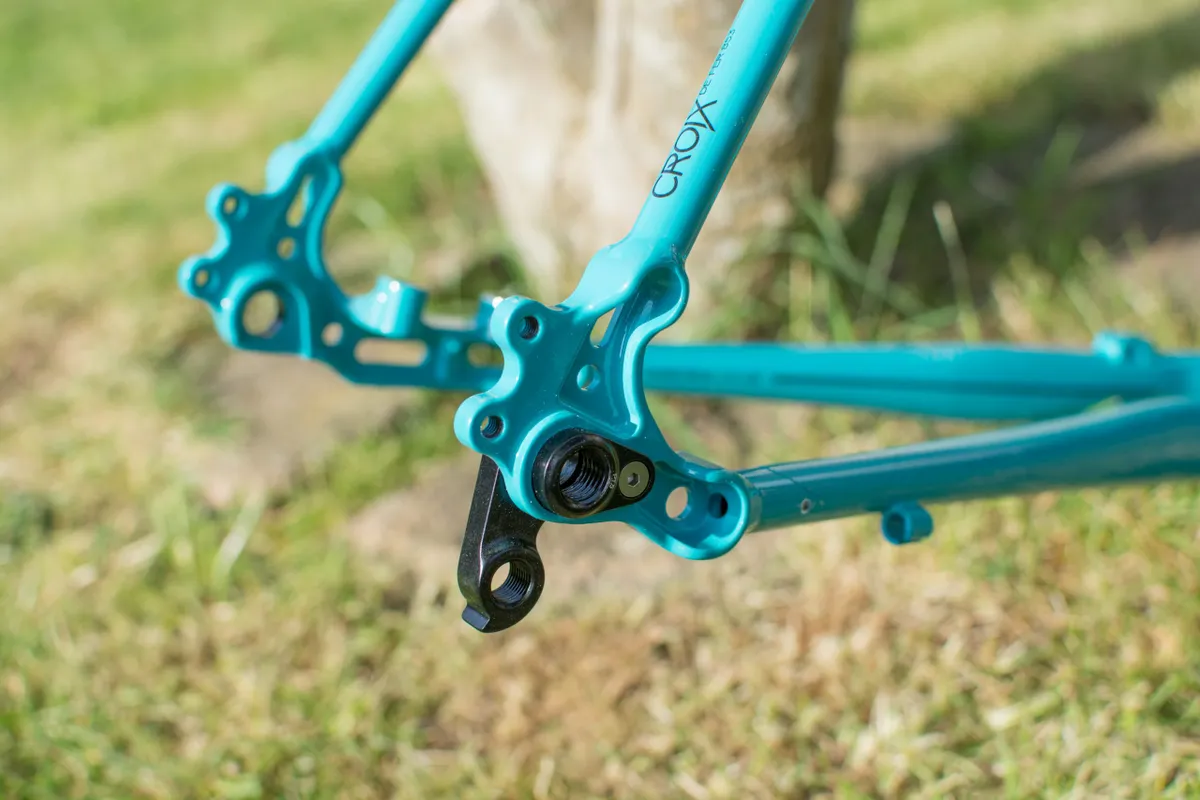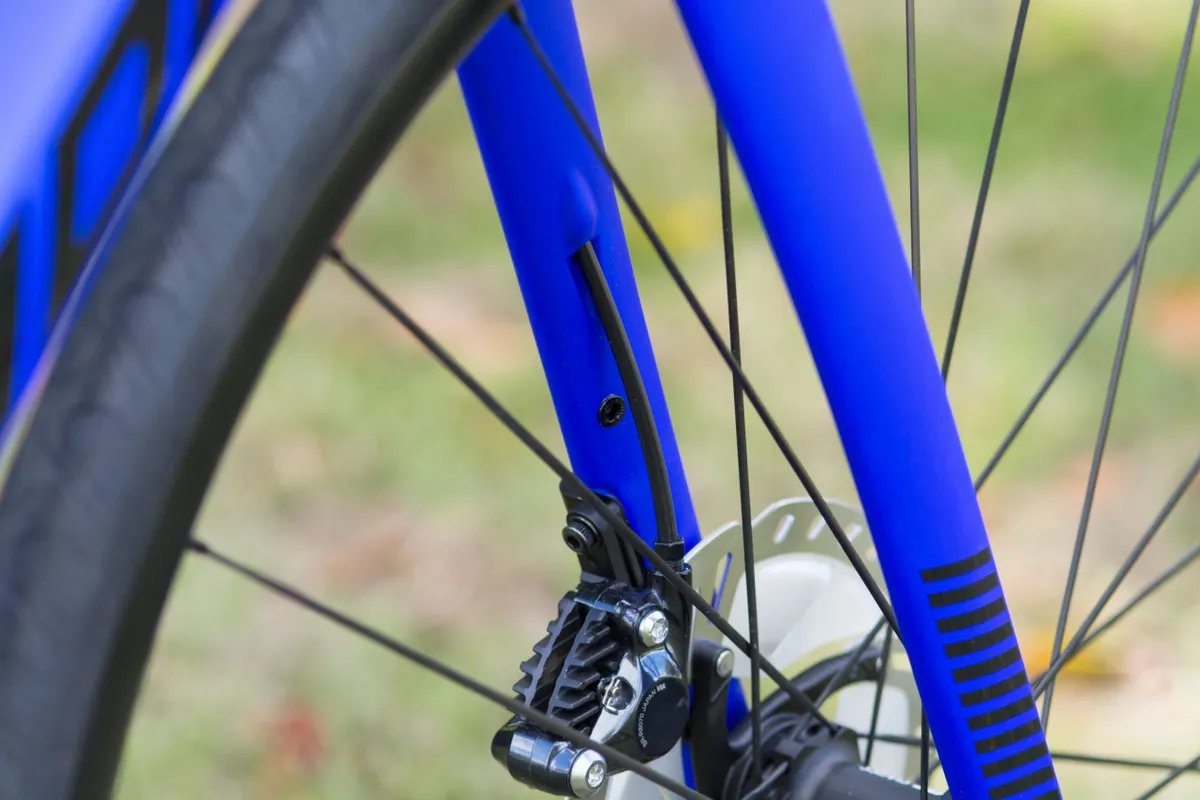When you’re buying a road bike or gravel bike it’s natural to focus on the headline stuff, such as frame material, groupset and geometry.
In addition to those attention grabbing specs, there are some rather geekier details to consider, ones that might be the decider when comparing two ostensibly similar bikes. Here are our top five to look out for.
Are you too rushed to read this article or need more visuals? Watch the video below, otherwise keep scrolling for the written version.
1. Rims

With wider tyres, tubeless tech and gravel riding becoming ever more popular, rim specs for road bike wheels and gravel bike wheels have never mattered more.
Many road bikes used to top out at a 25mm tyre but, thanks to disc brakes, many of the latest models will go up to a 32mm or even more in some cases.
Traditional road rims measured around 13mm to 15mm across internally, which was adequate for skinny tyres.
Wider rims give a more stable tyre profile – more of a horseshoe shape than a lightbulb – and eke a little more volume out of tyres, meaning you can get away with running lower pressures for better comfort, grip and control.
There isn’t consensus in the industry as to the optimum specs, but these days we’d suggest road rims should be at least 18mm wide internally, and gravel rims at least 21mm.
You should obey wheel manufacturer recommendations, but if you’re looking for versatility – say for an endurance road bike – around 21mm to 23mm is a bit of a sweet-spot. Most rims in this range will accept tyres as narrow as 28mm, but still work well with much fatter gravel tyres.

A further consideration is tubeless compatibility, something that’s worth having even if you’re not looking to try tubeless immediately.
If rims are tubeless-compatible, check whether the bits you need to go tubeless, like valves and tape, are included.
Some higher-end bikes now come with hookless rims, which lack a bead hook and are only suitable for tubeless-ready tyres. Hookless has some claimed advantages over conventional rims, but does have implications for tyre compatibility, so make sure you do your homework.
That brings us on to…
2. Tyres

Tyres affect the performance of your bike more than just about any other single component.
Even on a road bike with slicks, the difference between budget and premium rubber is pronounced. Cheap tyres waste watts and simply don’t feel as nice to ride.
For gravel bikes, tyre choice is even more critical – do you want something that will work on- and off-road? On fine loose gravel? In mud?
Tyres are often listed a long way down the spec list and they’re an area where bike makers often economise. Often, you’ll spot a familiar brand, but the tyres will be a cheaper variant of a flagship model.

Tubeless is a consideration here too – it’s not uncommon for bikes to ship with tubeless-compatible rims, but non-tubeless-compatible tyres.
If you’re going to need to change the tyres immediately to suit your riding, make sure you factor the extra cost into your buying decision.
3. Mounts for mudguards and accessories

Regular viewers will be aware of our affection for mudguards at BikeRadar (or fenders, if you’re North American). They’re an essential for rainy climates, protecting both rider and bike.
Sadly, many otherwise versatile machines lack mounts to fit proper mudguards.
If it’s likely you’ll want fenders at some point, check if the bike you’re interested in has mounts and, if it does, try to ascertain how easy it is to actually fit 'guards.
Some bikes theoretically accept them, but rely on proprietary mudguard designs, meaning you won’t be able to fit a universal model from a mainstream brand.

It’s also often harder to fit fenders to bikes with discs because the mounts are typically higher up on the fork and seatstays to clear the brakes, making things awkward.
While we’re talking accessories, do you want to attach extra equipment to your frame or forks? If you fancy a pannier rack or expect to carry extra bottles, check the mounts are there.
If you need a smaller frame, make sure it doesn’t skip some of the mounts featured on bigger sizes – some bike makers delete bottle bosses on smaller sizes, for example, because there’s less room in the frame.
4. Cable routing

High-end road and gravel bikes are moving to ever greater levels of integration, with some now entirely concealing their cables and hoses inside the frameset and cockpit.
This makes for ultra-clean, aerodynamic designs that look amazing, but it can lead to headaches and frustrations when it comes to long-term maintenance.
Internal cables are more complicated to replace and, with the latest disc-equipped aero road bikes that route cables through the upper part of the headset, it’s common to have to disconnect one or both brake hoses to replace the upper bearing.
If you maintain your own bikes and want the ultimate in simplicity, fully external cables are still the way to go. Most riders are happy to put up with some extra complexity though, and if you’re paying someone else to work on your bike, you may be less concerned.

Bikes with semi-internal cables may be a happy medium for you – routing that runs through the frame but not the cockpit isn’t usually too complicated and, until recently, this was the approach adopted for most mid-range and high-end road and gravel bikes.
Regardless of the approach, some cable routing is just better thought-out and tidier than others. Are the cables going to rub the head tube? Are the outers going to be properly secured inside the frame? If you’re getting a bike with an electronic groupset, are unused cable ports tidily concealed?
5. Bottom brackets and other standards

The bottom bracket is the assembly of bearings that your crankset rides on. Bottom brackets have a hard life and in some riding conditions will need to be replaced fairly frequently, possibly multiple times a year.
The best way to make a bottom bracket interface with a frame is the source of some controversy.
For decades, threads were standard, in recent years press-fit designs have become common and a source of angst to some.
Press-fit bottom brackets aren’t inherently bad and indeed many work faultlessly, but there’s no question they are less DIY-friendly than good old threaded BBs.
They also rely on accurate manufacturing tolerances, and frames that are even slightly out of spec can be plagued with problems – creaking is not uncommon.
As a result, we’ve seen a bit of a backlash against press-fits, with some manufacturers returning to threads.
We wouldn’t necessarily rule a bike out based on its bottom bracket standard, but it’s definitely not a detail to be ignored.
You should consider whether you’ll be working on your bike yourself, and whether a bike’s bottom-bracket standard might limit you in future upgrades – some standards offer more flexibility than others.
In a similar vein, you should generally be wary or proprietary or unusual standards.

If a new bike launches touting a game-changing axle design or uses odd rear hub spacing, for example, consider whether this is going to cause you problems down the line.
Proprietary designs make future upgrades much more difficult and, in extreme cases, spares availability can be a real issue. You don’t want to discover that, for example, it’s impossible or prohibitively expensive to buy a new wheelset for your bike in five years’ time because the manufacturer opted to go its own way.
In conclusion, always do your homework
Those are our picks – what details do you focus on when you’re shopping for a new bike? Let us know your thoughts in the comments below.
